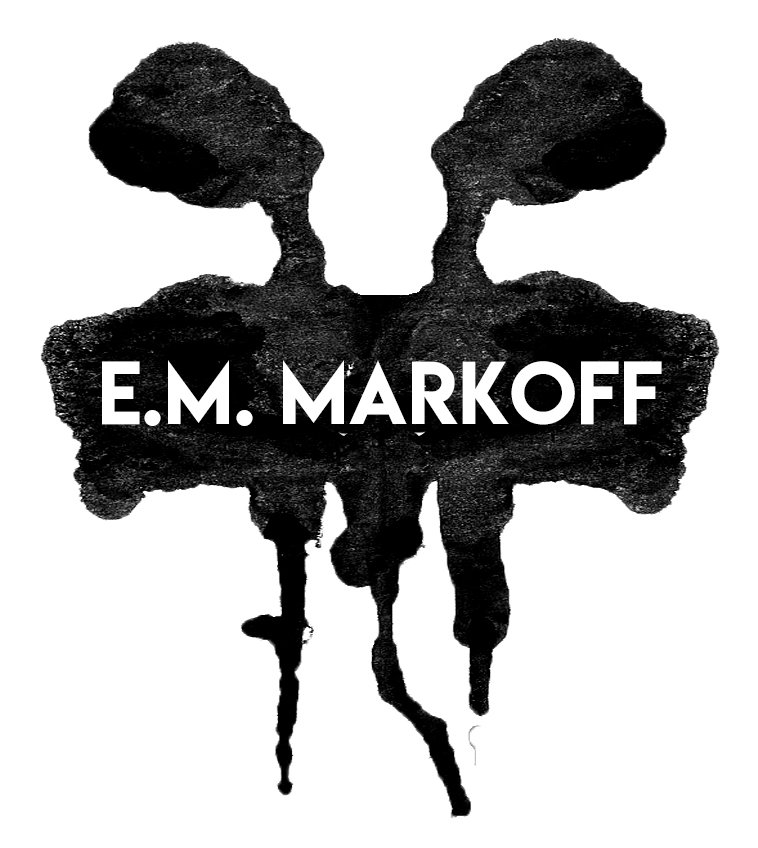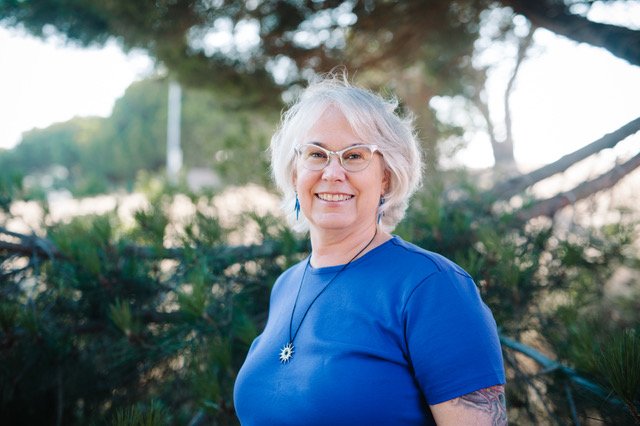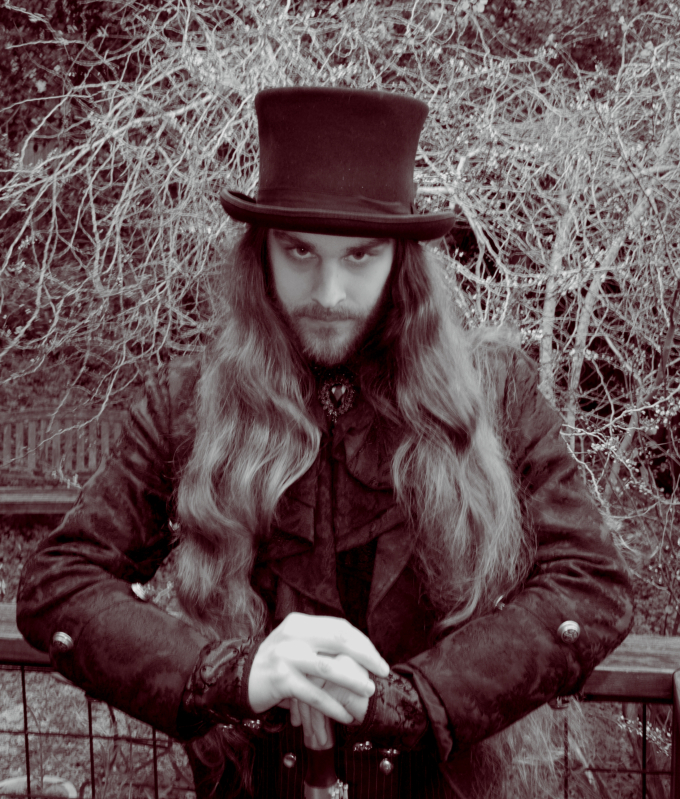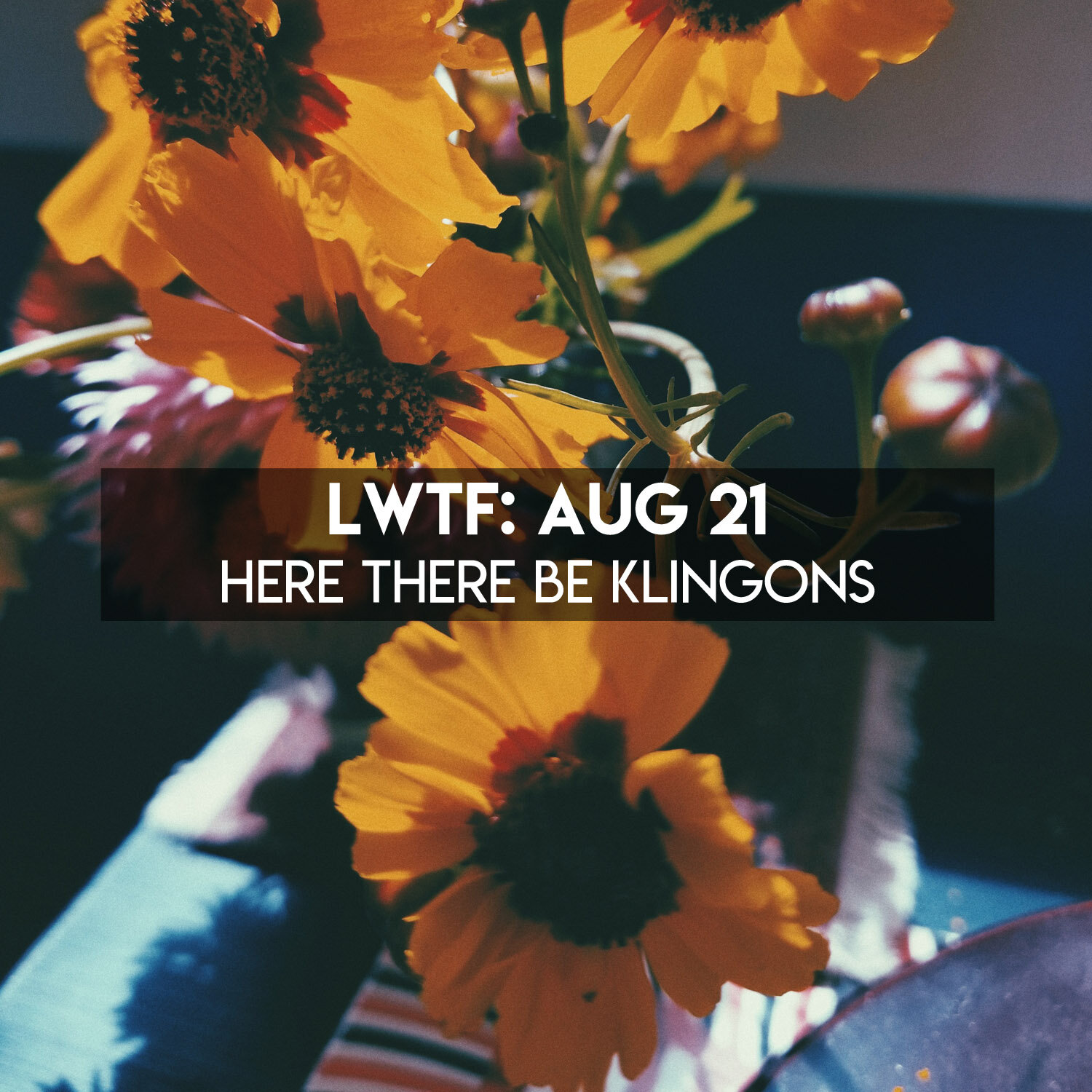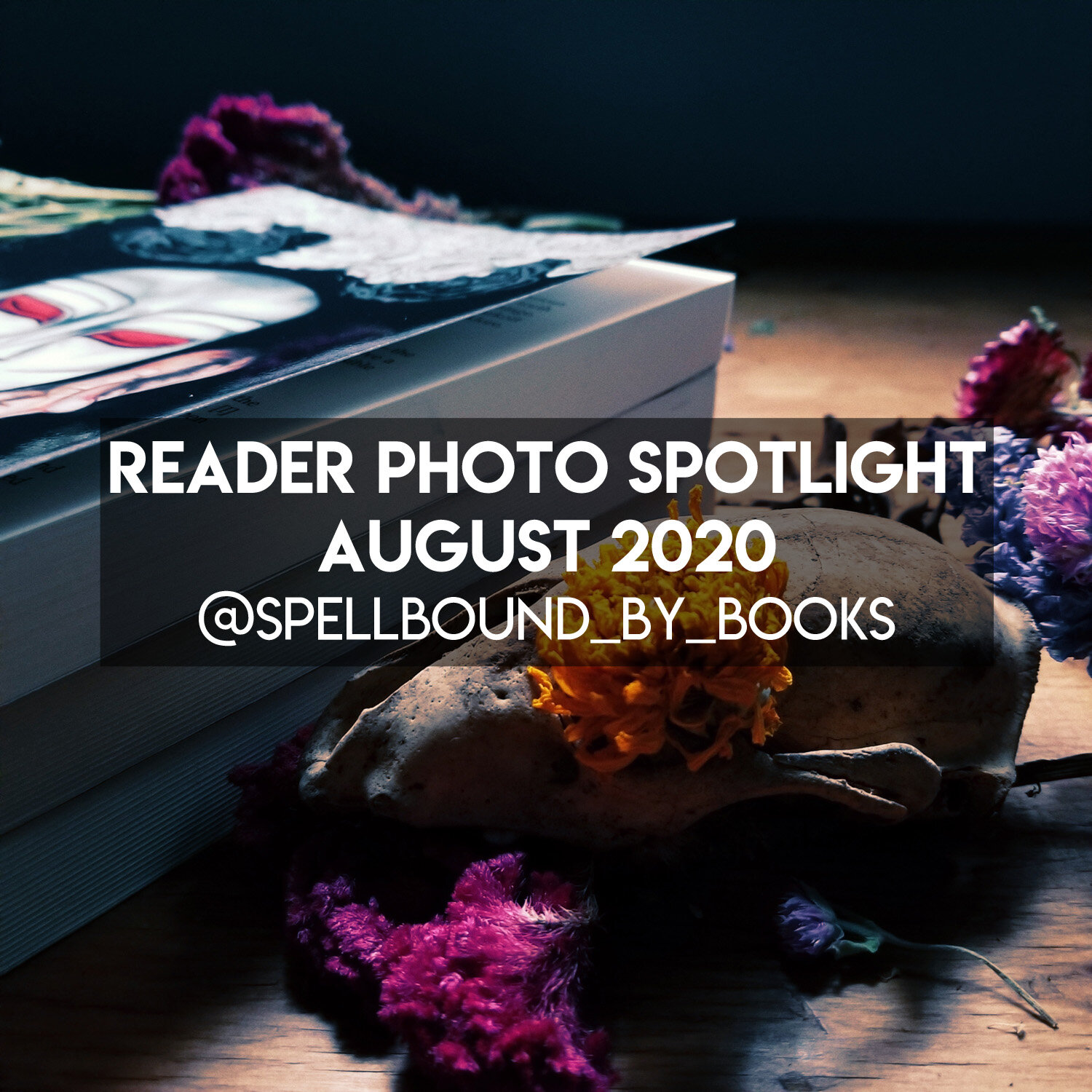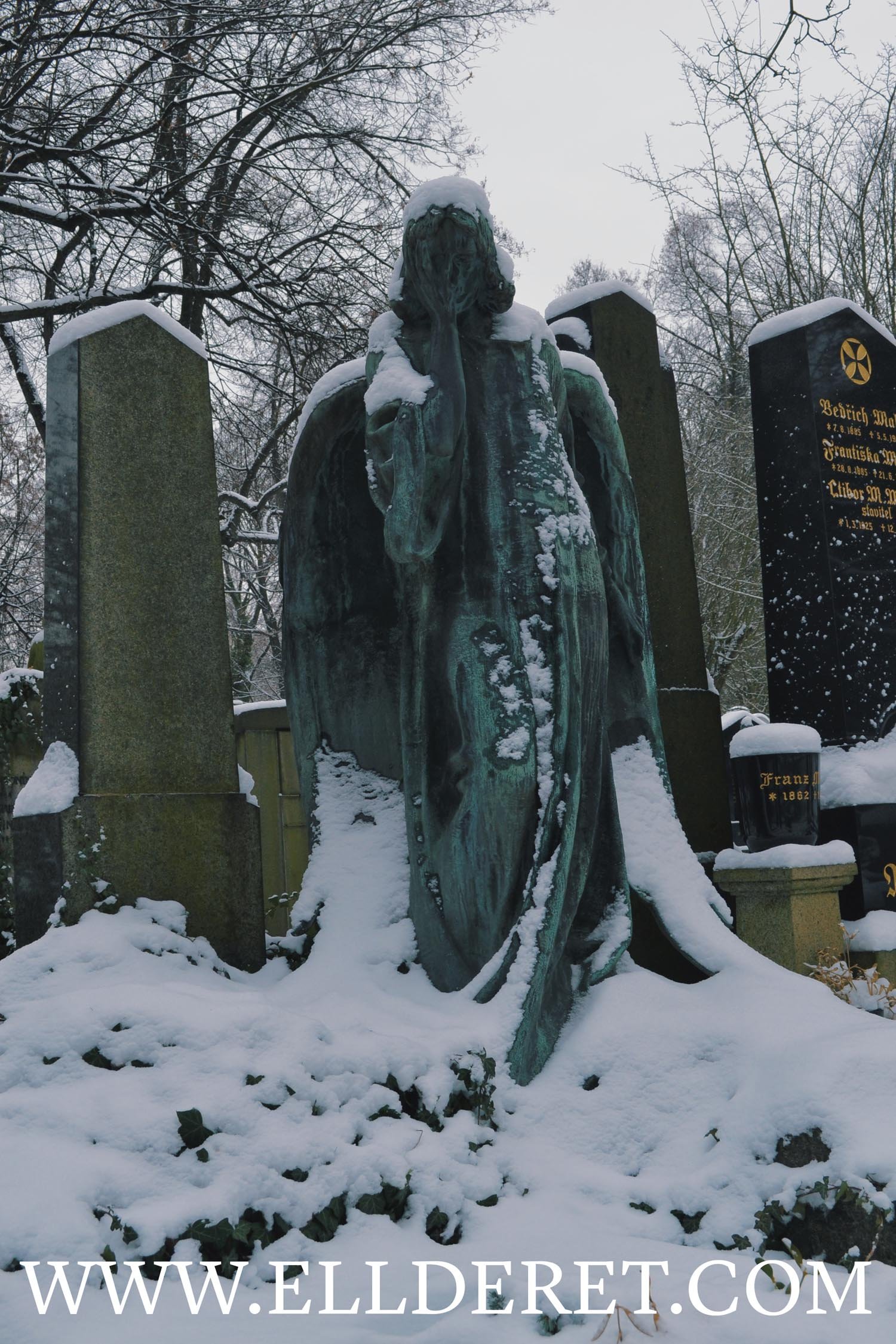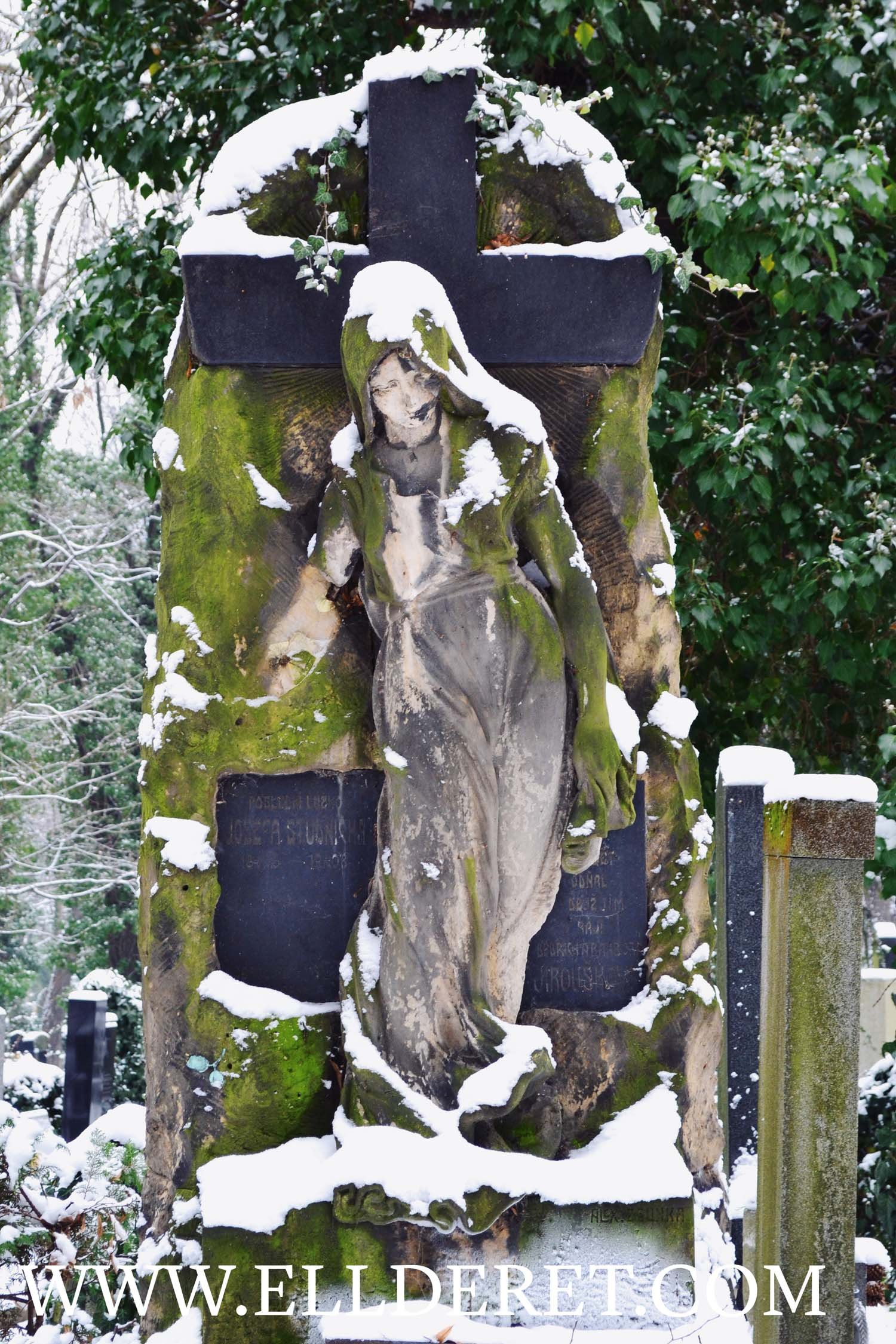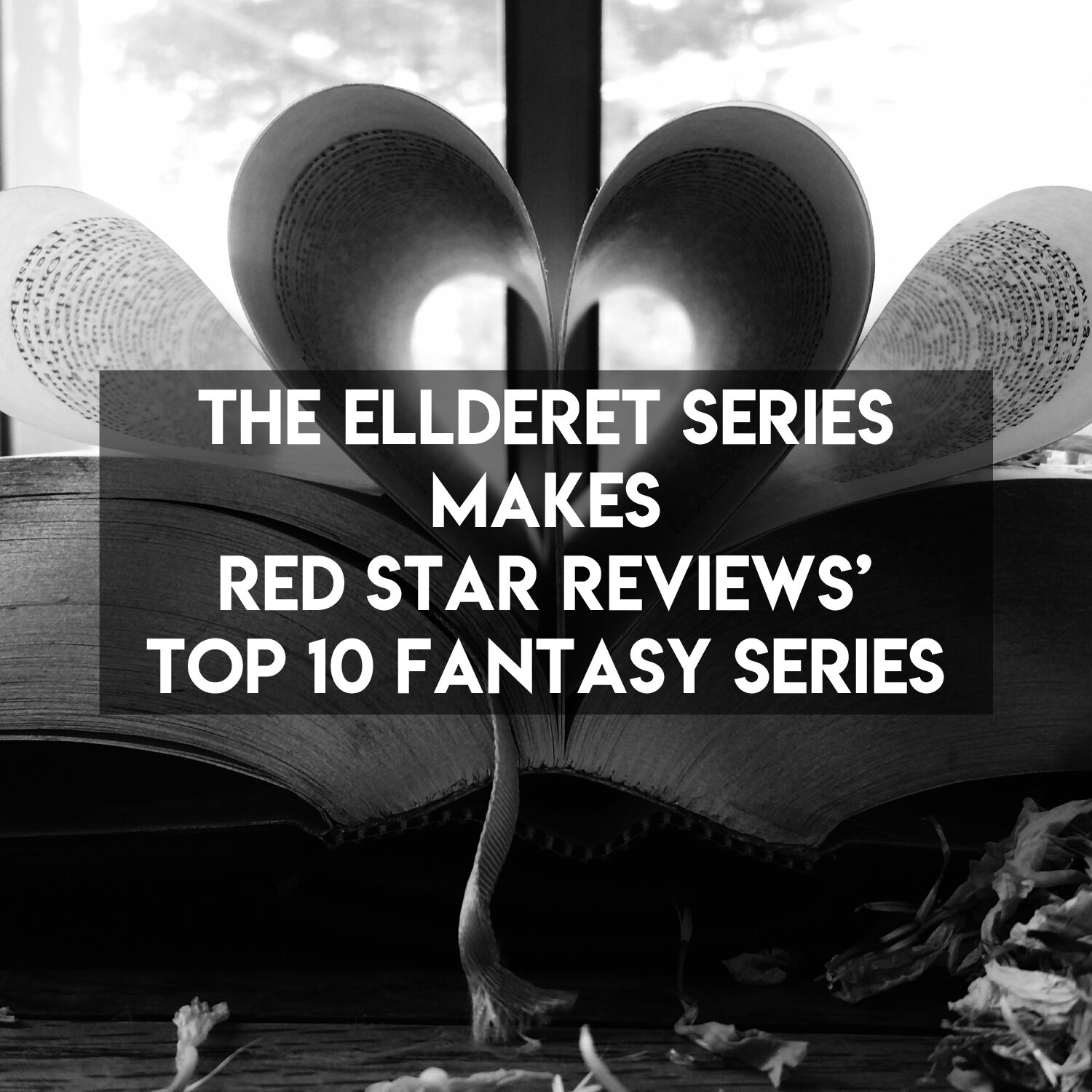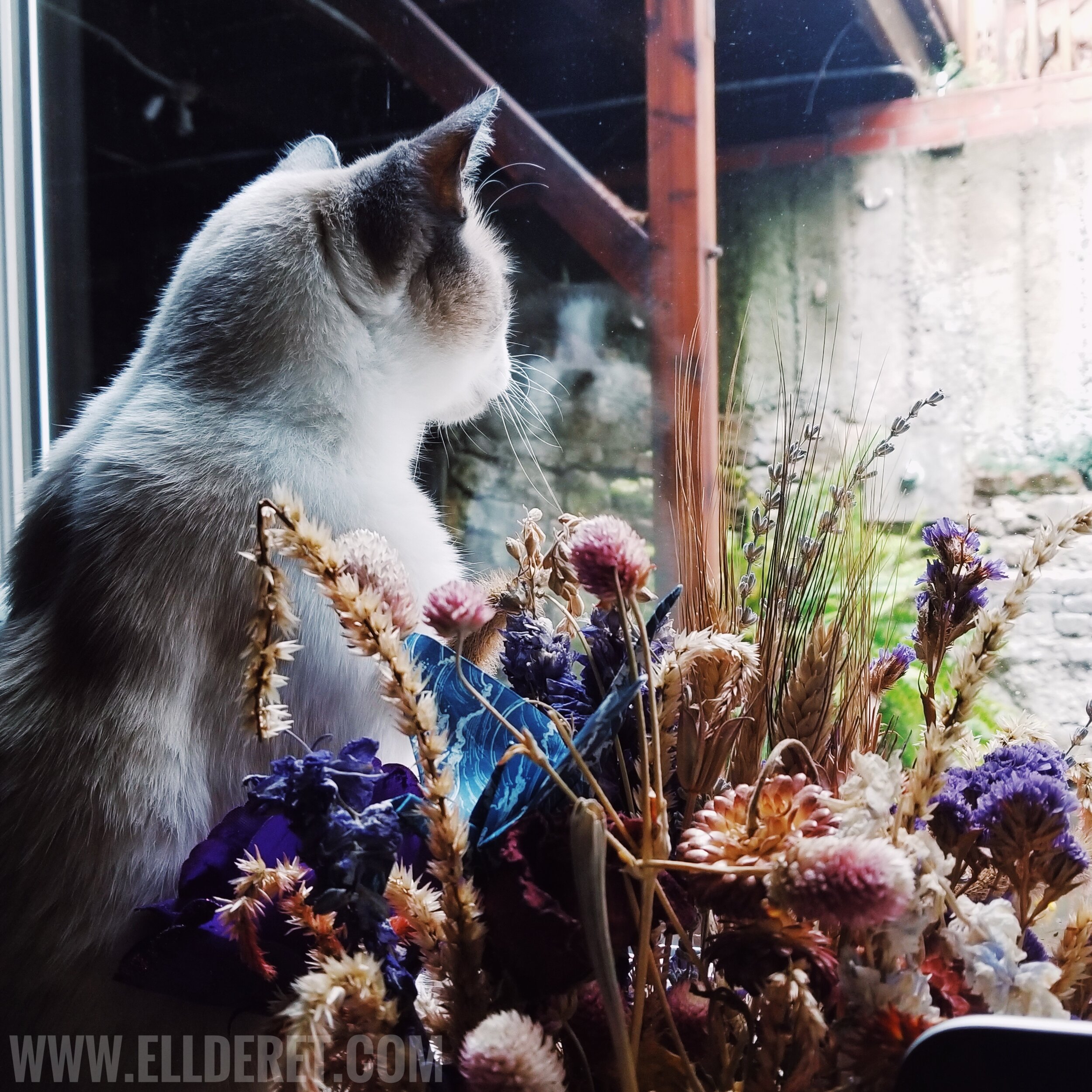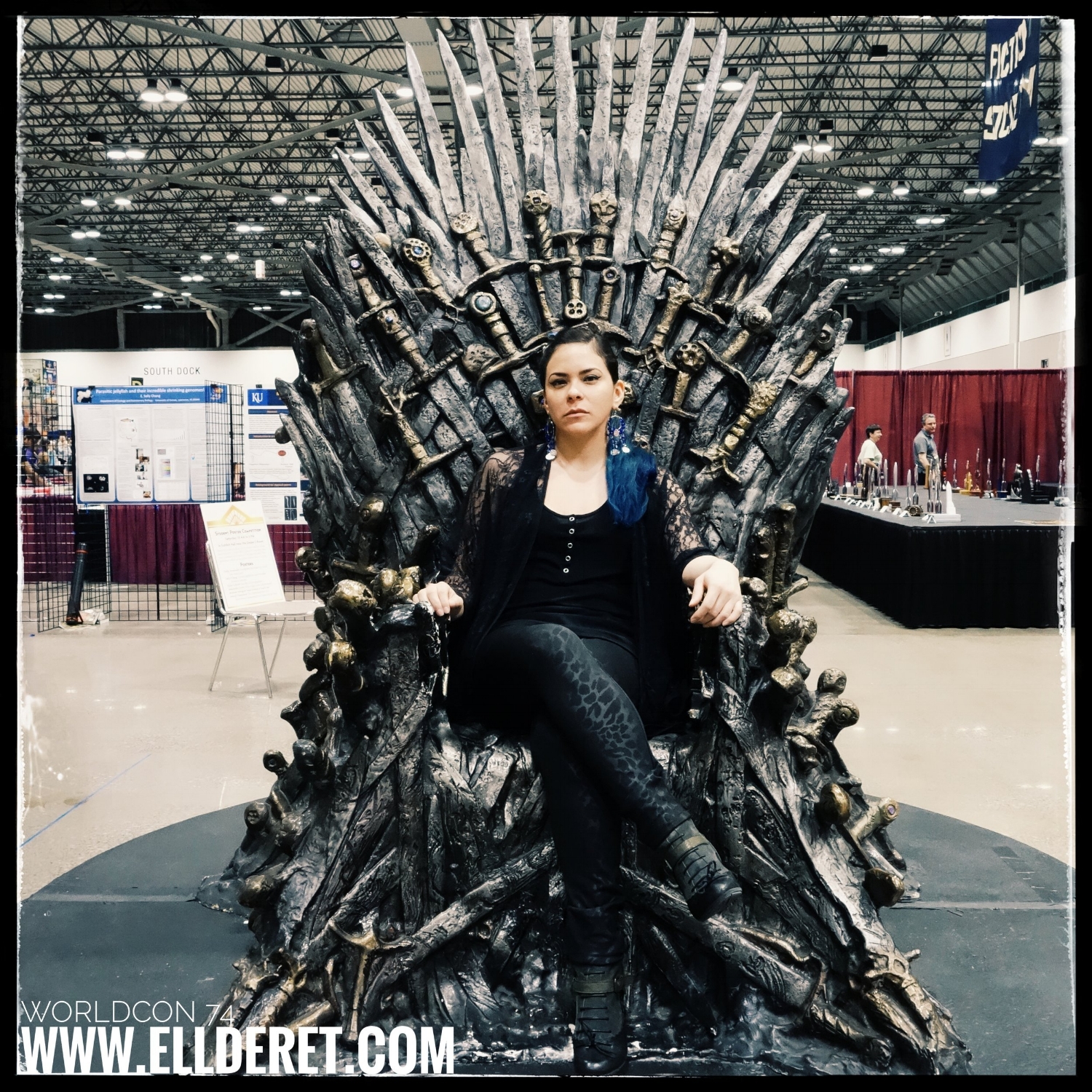Guest Post | The ‘Death’s Garden Revisited’ Playlist by Loren Rhoads
When I put together the original Death’s Garden book in the early Nineties, I worried that its subject matter would be really dark. After all, I was asking people to write about their relationships with cemeteries. Instead, the book turned into a celebration of life, family, community, and so much more.
The first book came together almost by accident. When I decided to put together a sequel all these decades later, I was much more intentional about its contents. I was looking to underline my belief that every day aboveground is a good day. Cemeteries help to put so much in perspective.
One of the most fun things I’ve done to promote the second Death’s Garden book is to assemble a playlist. I asked each of the contributors for their “favorite cemetery song” and I left it up to them to decide what that meant. Not everyone participated. Some suggested more than one song.
The song I started with, “Ain’t No Grave” by Crooked Still, sets the pace for the playlist. It’s a propulsive pop country take on the old gospel song, with tight vocal harmonies and virtuosic banjo playing over standup bass. It wears its religious roots upfront, but I love the shade of meaning it gives to the song that follows: “Pet Sematary” by the Ramones, which was written for the soundtrack of the movie based on the Stephen King novel.
Photo provided by the author | Kickstarter campaign live until April 16, 2022!
The third song, “Bury Me Face Down” by grandson, was new to me, even though the single came out in 2016. It quickly became an earworm, as have a number of the songs on the list.
As a matter of fact, I was really proud of the spectrum of songs filling the list. They span from folk songs and murder ballads through country and gospel and from rock to Goth to Industrial to classics. There are a couple of instrumentals from movie soundtracks alongside “In Memory of Elizabeth Reed” by the Allman Brothers Band and “Dreams of Wounded Knee” by Native American recording artist Bill Miller.
Some songs, like “Pet Sematary,” were suggested by several people. Some songs, like “Long Black Veil,” were suggested by multiple artists, but I felt I could only choose one version. Even though I already had Johnny Cash on the playlist for “Ghost Riders in the Sky,” I felt like I had to go with his version instead of the cover by the Bastard Sons of Johnny Cash, which was also suggested. I personally like Hugh Laurie’s take on “St. James Infirmary,” but once someone chose Louis Armstrong’s classic, I was glad to include it.
When the contributors (including E. M. Markoff!) joined me for a party on Facebook last weekend, I suggested that everyone listen to the playlist as we conversed online. Even though we were scattered across the US and Canada, the comradery and common playlist brought us together. Songs about cemeteries can make you feel good.
See for yourself by checking out the playlist on Spotify: https://open.spotify.com/playlist/4S0255SPm7grf5NShTbLgT?si=a183ec1bca4749e4
You can preorder Death’s Garden Revisited on Kickstarter until April 16: https://www.kickstarter.com/projects/lorenrhoads/deaths-garden-revisited-relationships-with-cemeteries
About the Author:
Photo provided by the author
Loren Rhoads is the editor of Death’s Garden: Relationships with Cemeteries and Death’s Garden Revisited. She’s also the author of 199 Cemeteries to See Before You Die and Wish You Were Here: Adventures in Cemetery Travel.
Book Blurb:
Genealogists and geocachers, travelers and tour guides, anthropologists, historians, pagan priestesses, and ghost hunters all venture into cemeteries in Death’s Garden Revisited.
They discover that cemeteries don't only provide a rewarding end to a pilgrimage, they can be the perfect location for a first date or a wedding, the highlight of a family vacation, a cure for depression, and the best possible place to grasp history. Not to mention that cemetery-grown fruit is the sweetest.
Spanning the globe from Iceland to Argentina and from Portland to Prague, Death’s Garden Revisited explores the complex web of relationships between the living and those who have passed before.
I'm a Contributing Author for the Kickstarter Campaign 'Death's Garden Revisited: Relationships with Cemeteries' (Project Ends 4/16)
Aside from working toward the upcoming publication of The Faceless God (ebook pre-order is now available on Amazon), I also have a short personal essay that will be published in Death's Garden Revisited by Loren Rhoads (author of 199 Cemeteries to See Before You Die). Her new book, which she is funding through Kickstarter, collects 40 powerful essays, complete with pictures, to illustrate why people visit cemeteries. This death-positive project has already exceeded its $1,000 goal and has unlocked a fair number of its stretch goals, including "online reading by contributors via Zoom"! I love reading my work to an audience and look forward to doing so in the near future.
My essay is about my trip to the Olšany Cemetery during the winter, and if you want to learn more please consider donating to the Kickstarter campaign. Pledges start as low at $5, which gets you a vintage cemetery postcard from the author’s own personal collection. The book will be in color and in addition to my essay, I’m also contributing my own pictures from the Olšany Cemetery. And because I had so many to chose from, below is a taste of what the pictures will look like. Please note that these pictures won’t be in Death’s Garden Revisited. I want to keep the pictures that are in the book a surprise :)
Only two more stretch goals remain, and if the project reaches $5k then the book release party will be held in a cemetery!! My black heart couldn’t be happier. I know Kira from the Ellderet series would totally be on board with this project; it’s most certainly his cup of coffee. Fun fact: the campaign was backed by author Brandon Sanderson -- yup, that Brandon Sanderson!
Stay tuned for a guest post from Loren Rhoads where she talks about the playlist of favorite cemetery songs she put together for Death’s Garden Revisited!
Wishing everyone a wonderful day!
EMM
Fuck Cancer. The Faceless God ebook is Still Being Published on 8/27/2022
Welcome to the first post of 2022! I hope the New Year has been kind and that everyone is staying safe. So, I'm just going to jump straight into what's been going on with me as it's directly affecting my career.
Note: The information in this post was originally published in my Newsletter of the Cursed on 3/31/2022. It’s been edited and revised for this blog.
Welcome to the first post of 2022! I hope the New Year has been kind and that everyone is staying safe. So, I'm just going to jump straight into what's been going on with me as it's directly affecting my career. I found a lump on my breast the same evening I got back from Rose City Comic Con in early September of last year. I was not seen by a doctor until November, but eventually my biopsy came back positive for breast cancer, more tests ensued, and on January 19 I had a lumpectomy. On the positive side, the tumor was small and hadn't spread beyond my breast. But on the negative side, the pathology report and genomic testing showed the cancer was fairly aggressive. To make sure it's gone for good and doesn't come back, I started chemotherapy in March and will be continuing treatment until May, and then undergoing radiation.
Needless to say, this all sucks, but I'm not going to let cancer fuck with the world of the Ellderet. More than anything, I want to put The Faceless God in your hands, my dear readers. The Faceless God ebook is still on schedule to be published on 8/27/2022 through Amazon. The paperback will follow shortly after, as it takes a bit more work for me to assemble (formatting, interior artwork, new chapter headers, etc). In the meantime, you can download a sneak peek over on BookFunnel, including the prologue and the first two chapters. Please note the artwork on the sneak peek cover is not the final cover art for TFG.
The next couple of months are going to be intense, but to quote a lyric from one of my favorite songs by Nine Inch Nails, "nothing can stop me now." You can now pre-order The Faceless God ebook on Amazon, and know that your pre-order helps put my stories in front of other readers.
Thank you for coming along with me on this crazy ride that is a writer’s life!!
Teipanoc (laters),
EMM
Guest Post | Redemption by Catherine Schaff-Stump
Like most readers, I know what I like. I have a weakness for troubled souls who turn it around. For me, the redemption arc is one of the most satisfying aspects of a good book.
A casual skim of my bookshelves stories where characters become better in spite of themselves. There’s Pride and Prejudice, where Lizzy Bennett and Fitzwilliam Darcy give up their biases for love.
Original image pulled from https://cathschaffstump.com/
Like most readers, I know what I like. I have a weakness for troubled souls who turn it around. For me, the redemption arc is one of the most satisfying aspects of a good book.
A casual skim of my bookshelves stories where characters become better in spite of themselves. There’s Pride and Prejudice, where Lizzy Bennett and Fitzwilliam Darcy give up their biases for love. On the shelf below it, I see The Count of Monte Cristo, where even revenge-driven Edmond Dantes learns how to forgive and start a new life. The list goes on: The Last Unicorn, where Schmendrick figures a few things out; the Rivers of London series, where I’m eagerly watching to see if Lesley May comes out the other side of her descent into angst-laden bad decision making; and The Adventures of Kavalier and Clay, in which the titular characters have to learn that the decisions that allow them to be true to themselves are the only decisions that allow for their redemption. Even the book my new novel The Wrath of Horus is patterned on, Dante’s Inferno, is a story about a guy turning his life around in the right direction because damnation is a bad option.
Image pulled from https://cathschaffstump.com/
I enjoy writing the redemption arc as much as I enjoy reading it. The Wrath of Horus is book three of the Klaereon Scroll series, and it is a descent into darkness for all the characters, but especially for Gregorius Klaereon. When we first meet Gregorius, he is the quintessential bad boy. I mean, come on. Look at his Byronic picture on the cover!
Gregorius has been guided toward his Trial with the god Horus by Horus himself, who has taught Gregorius he is better than everyone else, just like Horus is. Greg swaggers and talks with his fists, but something that Horus hasn’t taught Greg lurks beneath the surface of Greg’s actions. Greg believes he is responsible for causing the deaths of his parents. His bravado and his aggressive posture keep people away from this essential truth: In Greg’s mind, he is unlovable, and those who get close to him get hurt. In the book, Greg is abused, and he feels deep down he deserves it.
I have writer friends who don’t like Greg, who find him distasteful and irredeemable, a petty bully they have little empathy for, who makes the people around him suffer. What makes a character potentially redeemable? There’s a line I think can’t be crossed. As we launch The Wrath of Horus, I’ve posted an article elsewhere about Set, who I don’t think I can redeem, based on the severity and brutality of his crimes. Set’s motivations also make him irredeemable. Greg, on the other hand, has possibility.
Greg suffers because of Set. If redemption is partly suffering, as Dante suggests it is in The Inferno and Purgatorio, Greg goes through the physical act of paying for his sins. Greg comes through his experience to understand both himself and others in different ways. Most importantly, Greg understands from his family and friends that he doesn’t deserve suffering, that he doesn’t need to drive people away, that he can be loved.
What happens in the next book, The Wisdom of Thoth is largely up to Greg. I can’t tell you for sure if he is destined for redemption, because I haven’t written that book yet, but I do know the door is open, and Greg has the option to step through.
And I am a sucker for a good redemption arc after all.
Image provided by the author
Cath Schaff-Stump writes fiction for children and adults, from humor to horror. She is the author of the Klaereon Scroll series and the Abigail Rath Versus series. She lives and works in Iowa, teaching English. You can find her online at Facebook, Goodreads, Amazon, @cathschaffstump, and cathschaffstump.com, and follow her Kindle Vella serial The Autumn Warrior and the Ice Sword.
About The Wrath of Horus
For Gregorius Klaereon, his Trial with the god Horus isn’t about winning or losing. It’s about the fight. His temperament aggressive, his anger on display for all to see, Greg is a direct contrast to his brother Marcellus, the perfect Lord Klaereon, the prophet who can do no wrong. How Marc tolerates Greg is a mystery to Greg himself, especially as Greg knows deep down that Greg is responsible for the deaths of his parents.On the eve of the Klaereon birthday celebration, two days before Greg’s Trial, Greg fights with his cousin Flavia Borgia, and the two of them activate a reality shard which sends them, Marc, and others to the Abyss. There, they are judged and scattered throughout the nine circles. Greg, alone, discovers his Trial was the least of his worries as he is confronted by Set, the god of destruction, in a desolate landscape where his shadow powers no longer work. While Greg endures, certain his rightful punishment has found him, Marc and the others scramble to reunite, rescue Greg, and make their way to the Golden City of the banished Egyptian pantheon, desperate to find a way home.
Links:
Subscribe to Cath’s Newsletter: https://cathschaffstump.com/newsletter-sign-up/
Learn more about the Klaereon Scroll Series: https://cathschaffstump.com/the-klaereon-scroll-series-2/
Check out Cath’s Blog: https://cathschaffstump.com/blog/
Guest Post | The Heart of This Morbid Life by Loren Rhoads
When I was a kid, I went to a sleepover at a friend's house. Her family were strict evangelical Christians, which makes what happened later even more inexplicable.
Original image provided by Loren Rhoads
When I was a kid, I went to a sleepover at a friend's house. Her family were strict evangelical Christians, which makes what happened later even more inexplicable.
There were a gang of us there, all sixth-grade girls: Sherry, the two Lisas, Raeann, and me. I wonder now if we were celebrating someone's birthday, but it was so long ago that I don't remember. For that matter, I'm not sure who suggested we play "light as a feather, stiff as a board." Sherry and the Lisas all had older sisters, so one of them must have learned from an older girl.
When it was my turn, I sat in a high-backed wooden chair, arms on the armrests, eyes closed. Sherry stood behind me, rubbing her fingers lightly in circles over my temples. The point was to hypnotize me. Everyone repeated "Light as a feather, stiff as a board" over and over. Sherry shushed the other girls when they giggled.
My body relaxed by degrees, slumping into the chair. Eventually, I felt as if my soul flew out of my body, rushing upward toward the ceiling. I traveled through the house, which looked like a model or doll house, like a rat's maze with no roof. I watched her dad watching TV in the bedroom and her sister talking on the phone.
Image provided by Loren Rhoads
Back where my body sat in the dining room, my friends each stuck out two fingers on both hands. They slipped their fingers under my thighs and butt and lifted my body off the chair. I'm not sure how far they planned to raise me, but the process was complicated by the arms of the chair. As they tried to work out how some of them could hold me up while the others reached around the chair's arms, I could hear their voices as if at a distance.
When they juggled, then dropped me, I woke up from the trance.
It was the most incredible experience. The things I saw seemed so very real, things that eleven-year-old me would have had trouble imagining.
That's the mindset that's informed the rest of my life and led to my newest book. This Morbid Life is a memoir told through essays: stretching from taking prom pictures in a cemetery in the rain to spending a couple of days in a cadaver lab, from traveling the world to visit dead people in museums to standing beside my brother's coffin, from smuggling absinthe before it was legal to eating bugs for fun. I hope you'll join me on my adventures.
Loren Rhoads is the author of 199 Cemeteries to See Before You Die and Wish You Were Here: Adventures in Cemetery Travel. She was the editor of Morbid Curiosity magazine and the book Morbid Curiosity Cures the Blues: True Tales of the Unsavory, Unwise, Unorthodox, and Unusual. Her most recent book is This Morbid Life, a memoir comprised of 45 death-positive essays.
About This Morbid Life
What others have called an obsession with death is really a desperate romance with life. Guided by curiosity, compassion, and a truly strange sense of humor, this particular morbid life is detailed through a death-positive collection of 45 confessional essays. Along the way, author Loren Rhoads takes prom pictures in a cemetery, spends a couple of days in a cadaver lab, eats bugs, survives the AIDS epidemic, chases ghosts, and publishes a little magazine called Morbid Curiosity.
Originally written for zines from Cyber-Psychos AOD to Zine World and online magazines from Gothic.Net to Scoutie Girl, these emotionally charged essays showcase the morbid curiosity and dark humor that transformed Rhoads into a leading voice of the curious and creepy.
“Witty, touching, beautifully written, and haunting — in every sense of the word — This Morbid Life is an absolute must-read for anyone looking for an unusually bright and revealing journey into the darkest of corners. Highly recommended!” — M.Christian, author of Welcome To Weirdsville
Sales links:
The paperback at Amazon: https://amzn.to/3mhZajO
The ebook at Amazon: https://amzn.to/3kcFlrP
Bibio.com: https://www.biblio.com/book/morbid-life-loren-rhoads/d/1424501894
Get signed copies from Loren’s bookstore: https://lorenrhoads.com/product/this-morbid-life-autographed-1st-edition/
Happy Indigenous Peoples' Day 2021
Happy Indigenous Peoples' Day ✊
It's important to remember that the indigenous peoples of the Americas are alive today and that they are not just an anecdote in a history book. Their cultures, beliefs, and stories are not static, are not relegated to the past, and exist in the here and now.
Happy Indigenous Peoples' Day ✊
It's important to remember that the indigenous peoples of the Americas are alive today and that they are not just an anecdote in a history book. Their cultures, beliefs, and stories are not static, are not relegated to the past, and exist in the here and now.
Too often, indigenous peoples and their ways of life are treated as extinct, or as some exotic curiosity. For example, the History Channel’s Ancient Aliens show boldly states in the episode description that the "Mayan people vanished" while the episode appears to imply they collaborated with extraterrestrials. Sadly, I remember growing up believing that the Mexica (Aztecs) were wiped out, because it was what my American history class taught.
But this type of misinformation can be stopped if more people speak up and call it out as the erasure and exploitation that it is. One way to do this is by advocating for a curriculum that centralizes the indigenous experience from the perspective of indigenous peoples, such as teaching the awful truth about the history of Indian Boarding School policies in the United States. Or maybe the next time someone says that an indigenous group is "extinct" or that their culture is "dead," correct that person and let them know that’s not true. I know this is easier said than done, especially if you're in an environment that isn't BIPOC friendly or overly emphasizes European and Western values. Unless we speak up, change can't happen, so let's work together to make change happen.
Read more about historical Indian Boarding School policies. H/T to @speaknahuatl for the link to The National Native American Boarding School Healing Coalition.
Reader Photo Spotlight: @tldr_bookreviews
This month’s featured reader is @tldr_bookreviews! Many thanks to her for the lovely photograph of The Deadbringer. Give her a follow at @tldr_bookreviews.
AN ODE TO ELLDERET READERS, WHO ARE SOME OF THE DAMNED BEST PHOTOGRAPHERS 💙⚔️
This month’s featured reader is @tldr_bookreviews! Many thanks to her for the lovely photograph of The Deadbringer. Give her a follow at @tldr_bookreviews.
Stay in touch!
Subscribe to my blog, connect with me on social media, or read my books :)
Read the books already? Please consider leaving a review on Amazon. It really makes a difference in helping others take a chance <3
Stop Asian Hate
Eugene Lee Yang from The Try Guys put together an informative and nuanced video essay discussing Anti-Asian hate. Not only does Eugene give his own perception, but he also includes other voices from the Asian community as well as the Black community. A lot of the information presented in the video is new to me, and I’m thankful for it.
Hello! I hope everyone is staying safe and healthy <3
Today, I wanted to share an important video with y’all from one of my favorite YouTube channels.
Eugene Lee Yang from The Try Guys put together an informative and nuanced video essay discussing Anti-Asian hate. Not only does Eugene give his own perception, but he also includes other voices from the Asian community as well as the Black community. A lot of the information presented in the video is new to me, and I’m thankful for it.
One of the things he points out in the video essay is how Asian American history is not taught in classrooms, how what is taught omits the Asian American struggle against racism in the United States. I 100% agree. Not until I moved to San Francisco and visited Japantown for the first time did I learn about the Internment Camps of the 1940s. In fact, my first mochi was from Benkyodo—a Japanese business that first opened in San Francisco in 1906 but was forced to temporarily close when the family was interned during World War II.
American history excels at indoctrinating racial stereotypes as “facts” and then using those “facts” to justify genocide or erase the atrocities committed against BIPOC. Racism against the Asian community is part of American history and should be taught in schools to help dispel those harmful stereotypes and encourage dialogue.
Thankfully, history is no longer confined to classroom textbooks written from the White gaze. The internet is a powerful tool, and it’s allowed me to learn and listen to people from affected communities, including my own. Because there is always something to learn.
The video essay is about an hour long and covers the following topics (timestamps taken from the original YouTube video):
00:00 - Introduction
04:10 - Yellow Peril
08:20 - America At War
11:57 - Model Minority
19:06 - Vincent Chin
22:55 - Black & Asian Communities
31:11 - Policing
36:01 - Hate Rhetoric
46:10 - Monolith & Media
51:49 - Generational Divide
58:29 - Voting & Representation
1:04:39 - How You Can Help
Please watch Eugene’s video, listen to the people within the Asian American communities, and help lift up their voices. If possible, please consider donating to the AAPI community fund. #StopAsianHate.
Reading "Leaving the #9" on 12/9 + the Meaning Behind Cuetlaxochitl
"All I could make out was that her skin was a warm sandy brown, like mine, her lips full and stained a deep red, like a cuetlaxochitl." - from "Leaving the #9"
Morning, everyone! I'll be joining Anya Martin (Sleeping with the Monster) for Story Hour hosted by Laura Blackwell and Daniel Marcus. When: Dec 9 at 7pm PDT/10pm EDT via Zoom and Facebook Live! I'll be reading my short ghost story "Leaving the #9." Check it out!
Photo taken and modified from www.storyhour2020.com
In the story, I include both Spanish and Nahuatl, which is one of the many native languages of Mexico and is still spoken today by 1.7 million people. I describe one of the character's lips as being stained a deep-red like a cuetlaxochitl, which you might know as the "poinsettia" or "noche buena" for Spanish speakers.
While doing research for this story, I learned that the poinsettia was co-opted after colonization and had its indigenous origins rewritten to accommodate its new Christmas narrative. The name cuetlaxochitl means “mortal flower that perishes like all that is pure" and also symbolizes the life force of blood. The flower was introduced to the United States by then-U.S. ambassador to Mexico, Joel Roberts Poinsett, who apparently hated the native indigenous peoples. Surprise, surprise (not really), the native flower was named after him, with no recognition of its indigenous roots.
I grew up knowing this flower as the "flor de noche buena" and associating it with Christmas and thus Catholicism--colonialism at work, y'all. Not until I wrote "Leaving the #9" did I learn its true origins, and it broke my heart to learn of the erasure. Mexica (Aztec) history is not ancient; it's a culture and a people who are still very much alive to this day. So now that you know the truth, next time you see this lovely flower, you'll know its history ❤️
Have a great day!
Please check out these sources for more information over the cuetlaxochitl: https://bit.ly/33AwbOk, https://bit.ly/3lCPFrA
Stay in touch!
Subscribe to my blog, connect with me on social media, or read my books :)
Read the books already? Please consider leaving a review on Amazon. It really makes a difference in helping others take a chance <3
